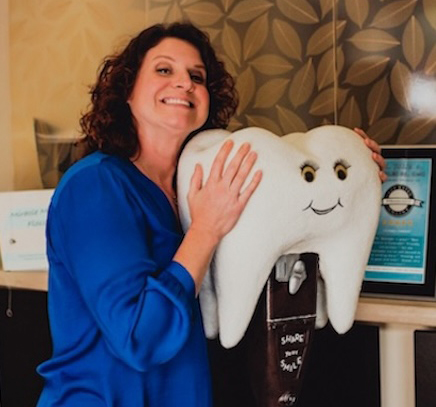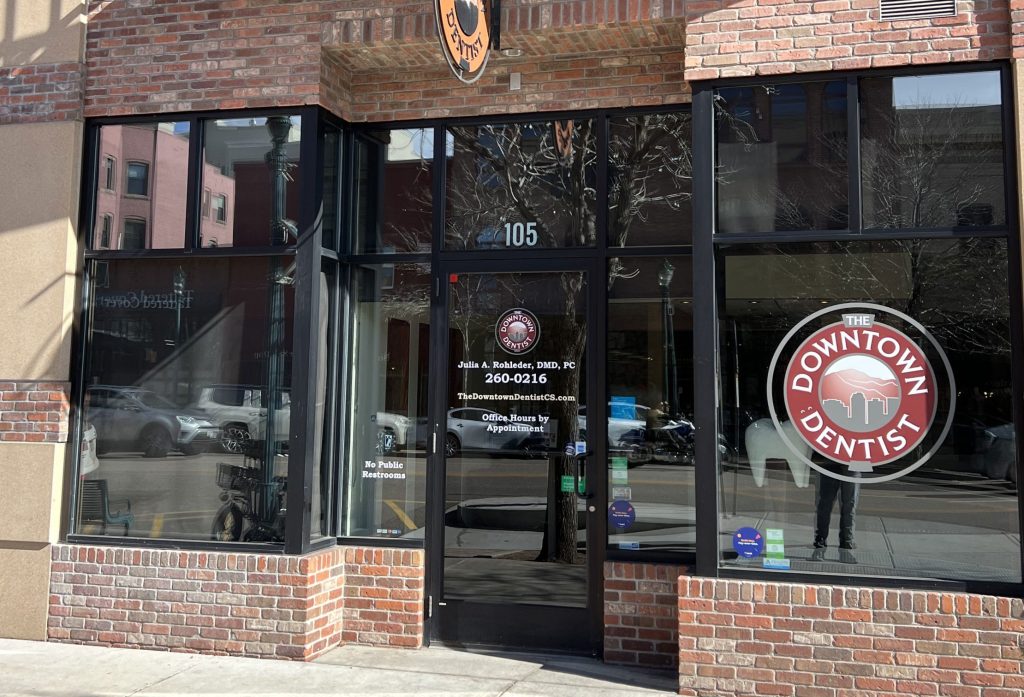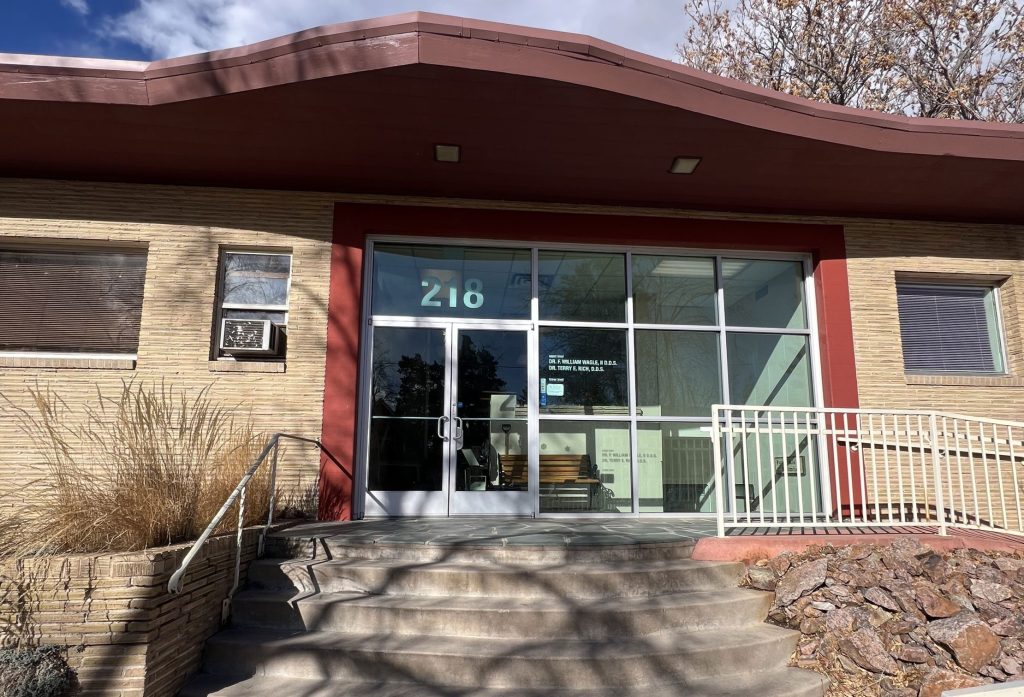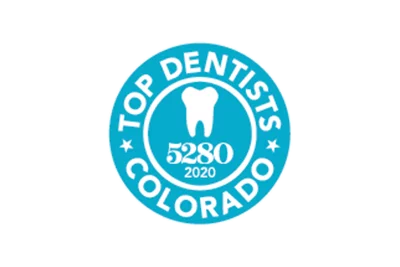Inlays and Onlays

Dental inlays and onlays repair damaged or decayed teeth and provide a more durable and aesthetically appealing solution than traditional fillings.
These restorations help to preserve the natural tooth structure and provide exceptional durability, making them an excellent choice for patients looking for a long-term solution to their dental problems.
Count on our team at The Downtown Dentist in downtown Colorado Springs for all your oral health needs.
The Basics of Dental Inlays and Onlays
To understand dental inlays and onlays, it’s important to first have a basic understanding of the tooth structure. A tooth has different layers, including the enamel, dentin, and pulp. When a tooth develops a cavity or is damaged, a dental treatment is necessary to restore its function and appearance.
Dental inlays and onlays are part of the restorative dental treatment options available. They are used to repair damaged or decayed teeth by replacing the affected part of the tooth. By using dental inlays and onlays, our team can preserve the natural tooth structure and provide a more durable and aesthetically appealing solution than traditional fillings.
What Are Dental Inlays?
Dental inlays are a conservative alternative to dental crowns and are recommended when the cavity inside the tooth is too large and deep for a traditional filling to repair.
During the dental inlay procedure, our team removes the damaged area of the tooth and takes an impression of the prepared tooth. This impression is sent to a dental laboratory, where a solid piece of material (such as porcelain, ceramic, or gold) is custom-made to fit inside the space. Once the inlay is ready, it is cemented onto the tooth, providing a natural-looking and long-lasting restoration.
One of the key advantages of dental inlays is that they preserve the natural tooth structure. Unlike dental crowns, which require significant removal of healthy tooth structure, inlays only replace the damaged or decayed part of the tooth, allowing for a more conservative treatment approach. Additionally, inlays are more durable and less prone to shrinkage or staining than traditional fillings, making them a popular choice for patients looking for a long-term solution to their dental problems.
Understanding Dental Onlays
Unlike fillings and inlays, which only replace the damaged or decayed part of the tooth, onlays restore the entire tooth surface above the gum line. This makes them a suitable option for patients with more extensive damage or decay.
The process of installing dental onlays is similar to that of dental inlays. Our team removes the damaged area of the tooth and takes an impression of the prepared tooth. This impression is sent to a dental laboratory, where the onlay is custom-made to fit the needs of the patient. Once the onlay is ready, it is cemented onto the tooth, providing a durable and aesthetically pleasing restoration.
Comparing Inlays and Onlays with Traditional Fillings
When it comes to dental restorations, traditional fillings have been a popular choice for many years. They are commonly used to repair minor tooth decay and restore the function and appearance of the tooth.
Traditional fillings, also known as dental amalgam or composite resin fillings, are placed directly into the cavity or damaged area of the tooth. They are affordable, fast, and effective treatments for minor tooth decay.
However, when the cavity is too large or deep for a traditional filling to effectively repair, dental inlays and onlays become a more suitable option. Inlays and onlays are custom-made to fit the specific needs of the patient and provide a longer-lasting restoration that preserves the natural tooth structure.
The Procedure of Installing Dental Inlays and Onlays
The procedure of installing dental inlays and onlays typically involves multiple steps. Here is an overview of the process:
- Initial consultation and examination: During the first visit, our team at The Downtown Dentist will assess your dental health and the extent of the damage or decay. This will help them determine if an inlay or onlay is the most suitable treatment for your specific needs.
- Impression of the tooth: If an inlay or onlay is recommended, our team will take an impression of the prepared tooth using digital scans or a putty-like material. This impression will be used to create a custom-made inlay or onlay that fits your tooth perfectly.
- Temporary filling: While the inlay or onlay is being fabricated in a dental laboratory, a temporary filling will be placed on the tooth to protect it and prevent further damage.
- Inlay/onlay placement: Once the custom-made inlay or onlay is ready, you will return to The Downtown Dentist for the final placement. The temporary filling will be removed, and the inlay or onlay will be securely cemented onto the tooth, providing a permanent and long-lasting restoration.
Materials Used in Dental Inlays and Onlays
Dental inlays and onlays can be made from a variety of materials, depending on the specific needs and preferences of the patient. Here are some common materials used in dental inlays and onlays:
- Composite resin: Composite resin is a tooth-colored material that can be matched to the natural color of the tooth. It is a popular choice for patients looking for a more aesthetically pleasing restoration.
- Ceramic materials: Ceramic materials, such as porcelain, are known for their durability and natural appearance. They can closely mimic the color and translucency of natural teeth, making them an excellent choice for patients looking for a restoration that seamlessly blends in with their smile.
- Gold inlays: Gold inlays are a traditional and durable option for dental restorations. They are known for their longevity and strength, making them a popular choice for patients who prioritize durability over aesthetics.
Caring for Your Dental Inlays and Onlays
Proper care and maintenance are essential to ensure the longevity and durability of your dental inlays and onlays. Here are some tips for caring for your dental restorations:
- Daily cleaning and maintenance: Brush your teeth at least twice a day and floss daily to remove plaque and food particles from around the inlays and onlays. Use a soft-bristled toothbrush and non-abrasive toothpaste to avoid damaging the restoration.
- Regular dental check-ups and professional cleaning: Visit The Downtown Dentist regularly for check-ups and professional cleanings. Our team will assess the condition of your dental restorations and provide any necessary maintenance or repairs.
- Avoid habits that can damage the restorations: Avoid chewing on hard objects, such as ice or pens, as this can chip or damage the inlays and onlays. If you grind your teeth at night, your dentist may recommend a nightguard to protect the restorations.
By following these care guidelines and maintaining good oral hygiene habits, you can ensure the longevity and durability of your dental inlays and onlays.
The Longevity and Durability of Inlays and Onlays
Dental inlays and onlays are designed to be durable and long-lasting restorations. However, their longevity and durability can vary depending on various factors.
Expected Lifespan of Dental Inlays and Onlays
The expected lifespan of dental inlays and onlays can vary depending on various factors, including the material used, the location of the restoration, and how well they are cared for. On average, dental inlays and onlays can last between 10 to 30 years.
The lifespan of dental inlays and onlays is influenced by the following factors:
- Material: Different materials, such as porcelain, ceramic, or gold, have different levels of durability and longevity. Gold inlays and onlays, for example, are known for their exceptional durability and can last for several decades.
- Location: The location of the dental restoration can also affect its lifespan. Inlays and onlays in areas of the mouth that undergo heavy chewing forces may experience more wear and tear over time.
- Maintenance: Proper care and maintenance, including regular dental check-ups and daily cleaning, are crucial for ensuring the longevity of your dental inlays and onlays.
By following good oral hygiene practices and maintaining regular dental care, you can help maximize the lifespan of your dental inlays and onlays.
Factors Affecting the Durability of Inlays and Onlays
Several factors can affect the durability of dental inlays and onlays. Here are some key factors to consider:
- Chewing surface: Inlays and onlays that are placed on the chewing surface of the teeth are exposed to more wear and tear compared to restorations in other areas of the mouth. This can impact their durability over time.
- Dental care: Proper dental care, including regular dental check-ups, professional cleanings, and daily cleaning habits, plays a crucial role in maintaining the durability of your dental restorations.
- Biting surface: The biting forces exerted on the inlays and onlays can also affect their durability. Avoid biting or chewing on hard objects, such as ice or pens, as this can chip or damage the restorations.
By being mindful of these factors and practicing good dental care, you can help maintain the durability of your dental inlays and onlays for a longer period.
Schedule a consultation, today
Your smile deserves the best care, and inlays and onlays could be the answer to maintaining your dental health effectively and beautifully. Schedule an appointment with one of our dentists by calling (719) 260-0216 for our Tejon Street location or (719) 633-3711 for our Willamette Avenue location.

 Dr. Rohleder
Dr. Rohleder Meet the Team
Meet the Team Sterilization Protocol
Sterilization Protocol Frequently Asked Questions
Frequently Asked Questions Careers
Careers












